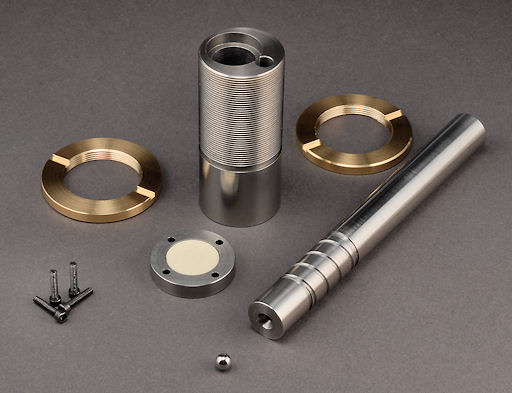Regarding wobble how was the platter held on lathe and how was the center hole made ? Once put on lathe it should be finalized on lathe itself. Would give more accuracy. Also longer the bearing spindle more accuracy is required a slight variation at the end would magnify wobble.
I wouldn't know how it was clamped on the lathe as I was not present when it was done.
I measured the thickness of the platter and found that it varies. I am assuming that the acrylic from the factory would have uniform thickness. I still think the buffing is what caused the unevenness. I am not sure if this can be corrected. I am hoping it is possible, as acrylic of that thickness is super costly. I am OK to lose one or two mm more if further buffing can achieve uniform thickness.
Regarding lubricants, one theory of viscous lubricant is; 'if' motor plus idler has sufficient torque it overrides the dynamically changing stylus drag because motor is already working on little heavier resistive force of the viscous lubricant when in motion.
I do like the denser sound produced by a more viscous lube. But it shouldn't be too dense as to reduce the torque (as unscientifically measured by "anti-static brush test" described earlier).
FWIW, I bought genuine Singer sewing machine oil from faraway Dadar. The current sewing machine oil I have is a no-name one. May be Singer will be different/better.
Also, fellow forumer Rikhav is arranging a small quantity of Mobil Delvac 1 synthetic oil for me:thumbsup: I will try that as well. Thanks, Rikhav
You have achieved admirable high quality DIY, so kudos to the work well done. :thumbsup:
Thank you
The finishing is a bonus of the buffing process. I was also pleasantly surprised by the level of fit and finish.






